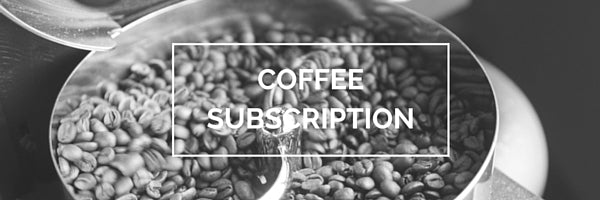
There are thousands of coffees to choose from, almost limitless options which add to the enjoyment of the coffee experience. Different roasts, regions, and methods of preparation lead to uncountable permutations of the simple cup of coffee. Learning about each of these variables is part of immersing yourself in coffee culture.
Today, we wanted to talk about one of those variables: the often misunderstood distinction between single origin and blended coffees, a notion steeped (pun intended) in misdirection and confusion as wine vintages and the aging process of Scotch whisky.
Of course, the first question on most peoples' minds is “which is better?” Ah, but wouldn't be easy if there were a direct answer to that question? We could simply avoid one of the two and be on our way! But you should know that it's not that cut-and-dry. In the matter of single origin and blended coffees, there is no “better.” The truth of the matter is in the details...
Extraction Method

Whether you're brewing single origin or blended coffee, there's an extraction method that's best suited to the variety. Choosing the correct method of preparation will allow you to get the optimal cup of coffee from either variety – a fact that, if unknown, may have led to the false believe that one type is better than the other.
Traditional wisdom tells us that single origin coffee is best suited for filter/pourover, french press or cold drip. Many western roasters tend to do a lighter roast for single origin, often baring bright citrus or fruit notes – neither of which mix well with milk. With single origin coffee, you can taste the distinct flavors and detect subtle aromatic elements that result in a brew with noticeable character. To make the most of those flavors and details, specialty coffee roasters will often use the pour-over method of extraction.
Blended coffees are often used in coffee makers or espresso machines. This variety blends well with milk, making it the preferred choice for espresso drinks such as lattes or cappuccinos. Unlike its nuanced counterpart, blended coffees tend to have a rounded, harmonious taste. This lends well to its use in espresso machines, which tend to magnify the flavors of the coffee by forcing hot water through fine grounds at high pressures. This results in a bolder flavor extraction, perfect for blends.
Choosing the right extraction method and preparation will yield a great cup of coffee from either variety!
The Effects of the Third Wave Coffee Movement

If you look back through history, you can see how blended coffee was given a negative connotation. Coffee has always been desirable wherever it was introduced, but when shipping and growing the beans was a major endeavor, it was actually a luxurious commodity.
Coffees were blended as a means to reduce costs (by mixing a fine roast with something not quite as palatable), and blends were also the best way to hedge bets against failing weather or “lost” shipments – by not relying on a single source, things were safer in uncertain times. In addition to these logistical measures, coffees were often blended as a necessity, such as with poor regions, or distant colonies with sporadic commerce. In Vietnam, for example, coffee was scarce, so the finished brew was heavily mixed with milk and sugar to mask any unfavorable tastes.
Naturally, all of this blending as a matter of cost or scarcity meant that the process earned a bad reputation. All of this has changed, however, with the rise of the third wave coffee movement.
While many modern coffee lovers still believe that single origin coffee can produce the most consistent and flavorful cup, there's also much to be said of modern blends. With a growing focus on the “seed-to-cup” concept comes improvements in quality across the board. Blending coffee is no longer a matter of saving money, but an exploration of flavor chemistry. Today's roasters are using their experience and talents to combine fine single origin coffees into complex, unique blends that offer all of the decadence and quality of their base parts while adding “something extra” for us to enjoy.
What's Ahead for Single Origin and Blends?

Thanks in part to widespread misconceptions, single origin coffees are saturating the market. However, smart and savvy roasters are using this glut as an opportunity to fashion their own signature blended coffees. This is giving roasters a new way to set their personal brand apart. Roasters are able to combine top-tier single origin coffees into new creations, and they're free to experiment with both the flavors and the branding and naming opportunities that arise. It's a complex process, and each barista or roaster's skills are being put to the test as they play with this fun new puzzle.
So, of single origin and blends, which is better? The answer isn't quite as simple as it once was when traders were mixing coffees to increase their profit margins or extend their supply of a scarce commodity. The extraction method, the method of drink (with or without milk), and the desired flavors all play a part. Most importantly, how specialty roasters approach the unlimited possibilities afforded by blending premium single origin coffees could change everything.
While single origin is the current trend taking over the coffee world, thanks to passionate roasters and the ability for diversification of flavors, blends could very well become the new standard of coffee excellence.
Experience unique single origin and blended coffee from Japanese roasters. Join our monthly Coffee Subscription service shipping freshly roasted coffee worldwide.
















